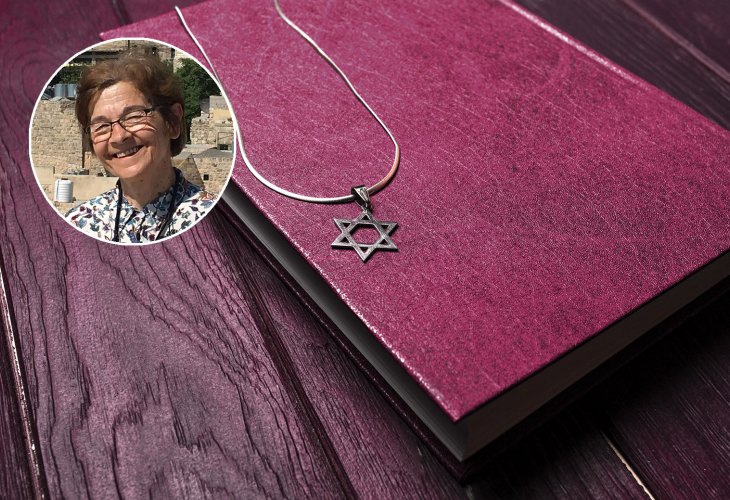Personal Stories
From Paris to Jerusalem: At 50 I Came to Israel, At 60 I Became a Jew
Guided by a deep sense of divine presence since childhood, Zipporah Hodaya Antonietti found her path home to Judaism—later in life, but with a full and joyful heart.
 Inset: Zipporah Hodaya Antonnietti (Background photo: shutterstock)
Inset: Zipporah Hodaya Antonnietti (Background photo: shutterstock)“I converted at 60, nine years ago,” says Zipporah Hodaya Antonietti. But her journey began long before that. From a young age, growing up in Paris, Zipporah felt the presence of Hashem in her life—even though she had no connection to Judaism at the time.
Despite a childhood marked by emotional hardship and pain, she recalls always feeling watched over by a loving Father. “I didn’t feel loved by people, but I knew Hashem loved me,” she says. “I saw life as a theater, and Hashem was the one directing everything from behind the scenes—for my good.”
As a child, Zipporah endured deep emotional wounds and was even told she was harmful or unworthy. Later, she learned she had a twin who died at birth and that her mother had momentarily died and come back to life in a miraculous way. These revelations shed light on her early pain, but also on the ways Hashem used suffering to guide her closer to Him.
At age 40, Zipporah was diagnosed with an incurable spinal and joint disease that left her in debilitating pain for six years. “The doctors said my life would be full of suffering and disability,” she recalls. But she turned to Hashem with unwavering faith: “Teach me what I need to learn, and then You’ll heal me.” And eventually, He did. In a moment, she was healed—completely. “I got up and started walking, jumping, as if I had never been sick.” People in her town, who knew her only as disabled, were astonished.
At 50, she made her first trip to Israel, volunteering in nursing homes across the country. “I didn’t speak Hebrew, didn’t know anyone. But Hashem had called me to serve Israel.” She prepared by studying Hebrew every day for a year, determined to answer the call.
In those nursing homes, Zipporah met elderly Holocaust survivors and war veterans—people whose lives embodied resilience and suffering. She listened, cared for them, and cried from gratitude that she was privileged to serve them. “It was such a zechut,” she says.
Six years later, she was invited to her first Torah class. “As soon as I heard the rabbi speak, I knew—it was the truth. The Torah is the truth!” She began studying everything she could as a non-Jew: the Seven Noahide Laws, middot, and shiurim from Hidabroot. Her perspective on life began to shift. “It healed the wounds of my past. I found peace, clarity, and purpose.”
Eventually, she realized that she didn’t just want to learn about Judaism—she wanted to become a Jew. She began studying for conversion in Netanya, attending classes and spending every Shabbat with a warm host family who showed her how to live Jewish life practically and joyfully.
At first, some mitzvot felt foreign. “I didn’t understand why I shouldn’t turn on a light on Shabbat,” she admits. But one day, it clicked: “By keeping His mitzvot, I could show Hashem I love Him. That changed everything.” She started preparing for Shabbat meticulously—out of love, not obligation.
A year later, she stood before a rabbinical court and was accepted as a Jew. “For the first time in my life, I said Shema Yisrael as a Jew. I cried with joy. I was finally part of Am Yisrael.”
After her conversion, she moved to Bat Ayin and later to Jerusalem, where she continued learning Torah and Chassidut. She supported herself through translation work, elder care, and secretarial jobs—all while continuing to teach the Seven Noahide Laws through online classes and social media.
Now living in the heart of Jerusalem, she looks back on her life with deep gratitude. “Everything Hashem does is good. We must thank Him always, even when we don’t understand yet.” She chose the name Hodaya—gratitude—as a constant reminder to thank Hashem for the miracles, challenges, and guidance He placed in her life.
“Hashem gave me a perfect life,” she says. “He brought me home.”

